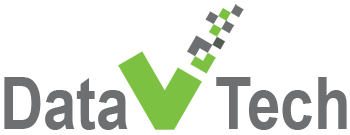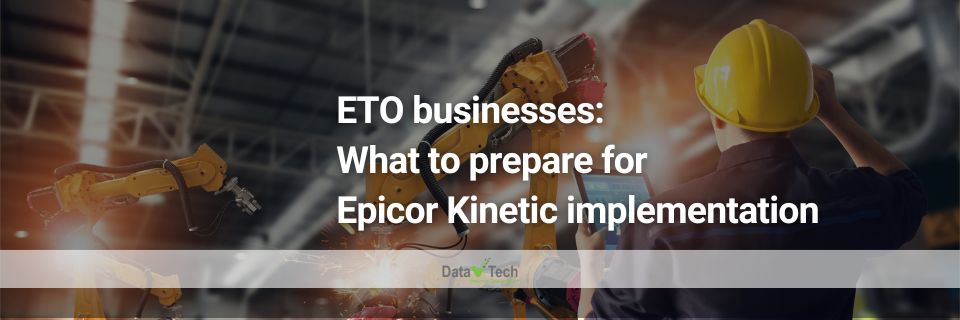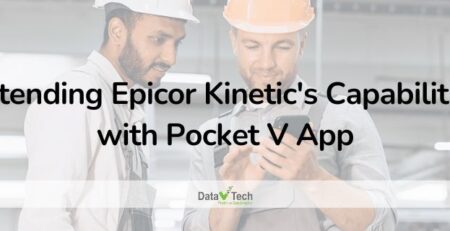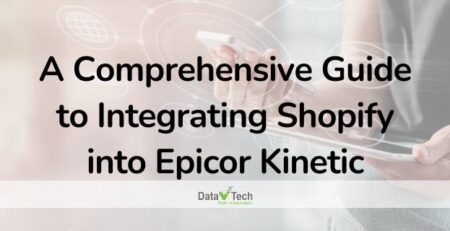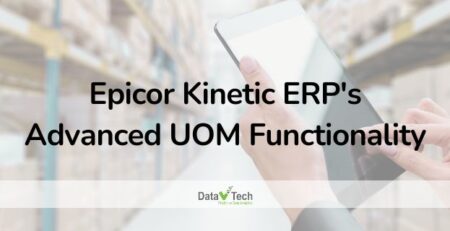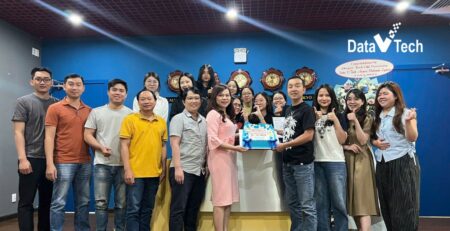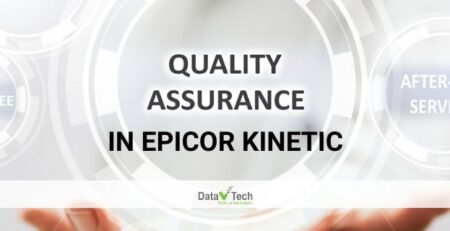Engineer-to-order (ETO) businesses worldwide face increasingly sophisticated requirements and stricter standards. Many have gradually digitized to apply technology to help improve productivity, reduce costs, and meet contemporary demands. The Epicor Kinetic enterprise resource planning (ERP) system has accompanied global ETO manufacturers in this transformation. Below is Epicor Kinetic experts’ sharing on preparing for Epicor Kinetic implementation.
ETO Concept
ETO (short for Engineer to Order) is a manufacturing model in which the manufacturing company designs, fabricates, and refines a product after receiving an order. The specific designs aim to meet customers’ strict requirements.
Advantage
With the ETO method, the fabrication of complex or specialized products ensures to fulfill customers’ various orders.
Shortcoming
The ETO process is highly complex, requiring a considerable amount of management capacity from the manufacturer to ensure compliance with the design. Besides, it is difficult to predict the cost and time of the entire production process when the business has to constantly customize the product to customers’ needs.
Notes for ETO businesses to prepare when implementing Epicor Kinetic
Always considered a superior business solution with unlimited customizability, flexibility, and user-friendliness, Epicor Kinetic is a top choice for ETO businesses. The system enhances the advantages of its manufacturing model and limits its weaknesses. However, implementing Epicor Kinetic requires them to make other critical decisions besides those on software features. The simplest examples are: Who to choose to deploy the software or support the deployment? What features to implement and how to do it? Within how long?
Most Epicor Kinetic users and implementers agree that hiring a third party as the deployment unit is the optimal solution. Firstly, their method focuses on the rapid deployment of primary stages. Secondly, they have a lot of experience in software implementation, so they can suggest the areas that need special attention during the process. For example, they can help businesses decide which modules to use or which features to hide for each stage, each department, or each industry.
Besides, businesses need a core team of people who want to apply and patiently learn new skills. This team needs to include representatives from both the top and shop floors. Suppose they are willing to learn about Epicor beforehand, change their daily routines (e.g., customizing forms, reports, and process controls), and coordinate well with the deployment team. In that case, the success rate of the digitalization project will be very high.
Notably, when businesses have decided to implement Epicor Kinetic, it requires planning, perseverance, and a lot of time to study the processes of personnel training and operation.
In addition, implementing Epicor is an excellent opportunity for businesses to screen junk data such as duplicate customers, suppliers who have changed names, and incorrect operating standards, among other issues. If you want to improve standards with the new ERP, enforce them during the data migration, and then the project will go live smoothly.
Finally, be realistic about the needs of the business and the time frame for implementing Epicor Kinetic. Epicor allows unlimited customization. However, that shouldn’t be a reason for companies to customize everything. Mainly, ETO businesses shouldn’t do that. The customization process is complex and can easily prolong the project. Consequently, it will raise costs for the company. Contact and discuss directly with the Epicor Kinetic deployer for advice and make an informed decision.
In summary, ETO enterprises can confidently deploy the robust, flexible Epicor Kinetic ERP system with
- A reliable, experienced third-party ERP implementing agency,
- The internal personnel that are determined and unanimous to change operating and business methods,
- And full awareness of their needs and possible timeframes for the digitization project.
